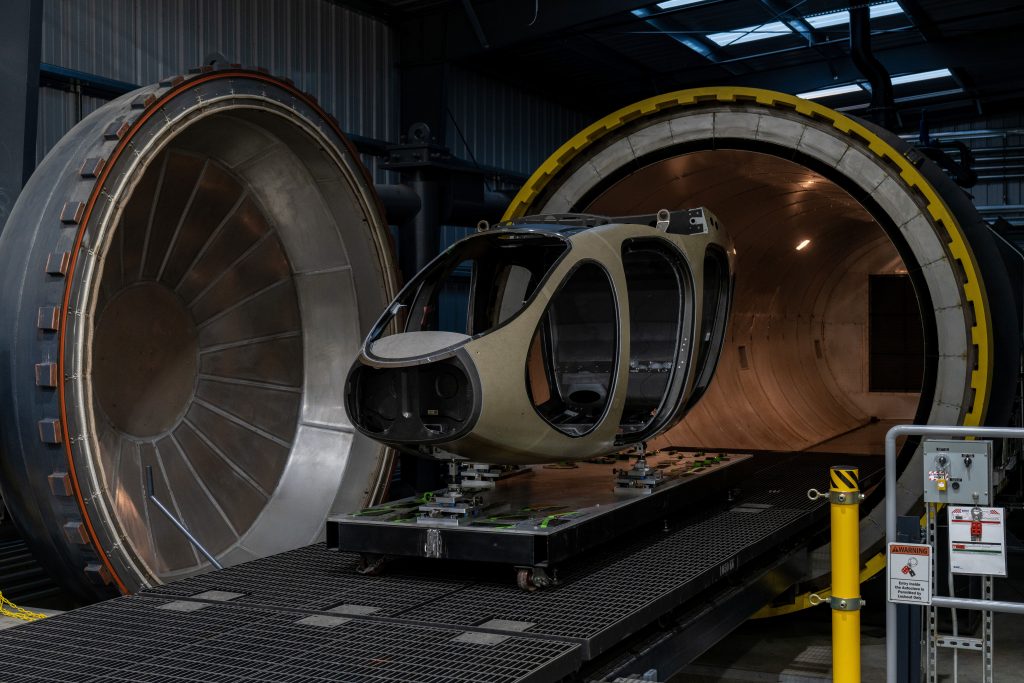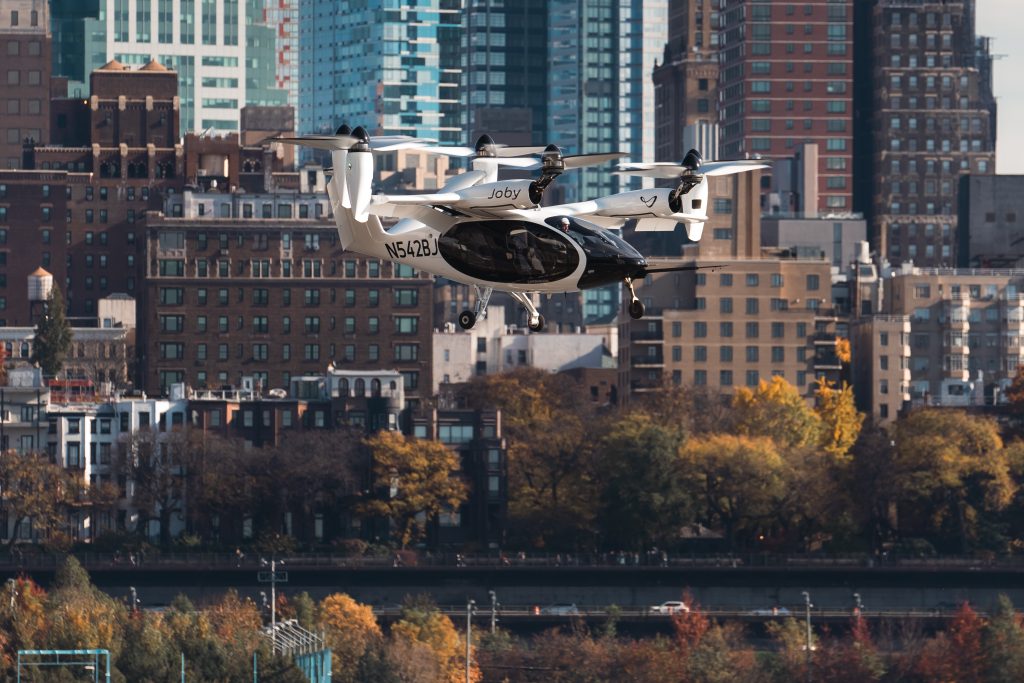The carbon fiber buckets for Midnight’s seats are manufactured using tailored fiber placement (TFP), with carbon fiber woven into specific preform shapes using resin transfer molding. “The seat back shells will also be made using recycled carbon fiber with the raw material eventually coming from the manufacturing waste of our fuselage composites,” says Muniz.
To speed the certification process, many AAM manufacturers selected composite materials already approved by the FAA for aerospace. Joby, however, worked with Toray to develop a new thermoset composite material that includes unidirectional carbon fiber, fiberglass and lightning strike (fabric with copper mesh). Joby believes that picking the highest performance material will prove key to the success of battery-electric aircraft, according to a company spokesperson. The Toray material, which Joby is working to qualify, is the best-performing material the company was able to find on the market in terms of strength-to-weight ratio and impact crack resistance.
Toray is also partnering with Fokker/GKN on production of a thermoplastic material for the Joby aircraft’s control surfaces.
Can Supply Meet Demand?
As leading AAM companies begin opening larger production facilities, composite manufacturers are faced with a dilemma. Should they expand their own operations in anticipation of AAM industry growth or wait and see what happens?
“The [AAM] players have pretty aggressive build rates once they get certified, and I think it’s going to be challenging for the supply chain to meet the type of ramp up they’re looking at,” says Bob Yancey, business development director at Hexcel. “There are a lot of things that have to come into play for this to be a successful market, and I think it’s impossible to know how big the market will be until you actually get some vehicles out there. I see projections from all of them about how many vehicles they plan to build each year, but honestly, it’s a complete unknown.”
Yancey adds that there are a lot of questions to be answered about public acceptance of AAM, service price, ease of use, profitability and more. In addition, there are still logistical challenges such as air traffic management and the construction of infrastructure like landing/takeoff sites equipped with charging stations. Demand could also diminish if there’s an eVTOL crash that injures or kills someone.
If the AAM industry’s most optimistic projections are correct, however, the composites industry could face supply challenges. Yancey says if there’s hockey stick growth – extremely rapid growth after a long period of linear growth – it will take material suppliers two to three years to get assets on the ground, qualified and certified to support that growth. The composites industry has capacity now, but in two years, once commercial aviation production returns to pre-pandemic levels, that extra capacity will disappear.
Composites suppliers like Teijin may need firm commitments from AAM customers before they make any major moves on increasing production.
“You’ve got to do these things according to your business plan, and what makes sense to de-risk it,” says Lopez. “You can’t go and build a new carbon fiber plant and then all of a sudden, the customers say, ‘Sorry, the market didn’t pan out the way we thought it would, so we lost our investment.’”
The leading AAM companies, however, are confident that they will have sufficient composite materials to meet their future production needs.
“We’re working hand-in-hand with our suppliers, who have been very supportive of our needs and our timelines. We’ve selected best-in-class companies with aerospace backgrounds, so they understand the importance and opportunity we have together to get this right,” says Newton.
Even if the move to mass production doesn’t go as quickly as the AAM industry hopes, the odds appear good that their aircraft will be sharing the skies with more conventional aircraft before too long.
“Everyone hopes that they’re successful because of what they promise – lowering carbon footprints, saving people time on long commutes and delivering goods and services more effectively,” says Lopez.
Mary Lou Jay is a freelance writer based in Timonium, Md. Email comments to mljay@comcast.net.
The fuselage of Joby’s aircraft, seen emerging from the autoclave, is made with carbon fiber prepregs from Toray Advanced Composites.
Photo Credit: Joby Aviation, (c) Joby Aero, Inc.
Joby Aviation’s eVTOL aircraft completed the first electric air taxi flight in New York in November 2023.
Photo Credit: Joby Aviation, (c) Joby Aero, Inc.




